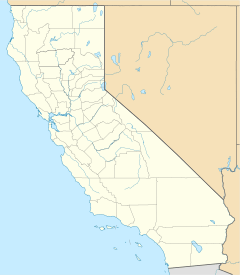Nares, California facts for kids
Quick facts for kids
Nares
|
|
|---|---|
|
Former settlement
|
|
| Country | United States |
| State | California |
| County | Fresno County |
| Elevation | 187 ft (57 m) |
Nares was once a small community located in Fresno County, California. It is no longer an active settlement today. Nares was situated near the Southern Pacific Railroad tracks. It was about 0.5 miles (0.8 km) northwest of a place called Helm. The area where Nares once stood is about 187 feet (57 meters) above sea level.
What Was Nares?
Nares was a "former settlement." This means it was once a populated place, like a small town or village, but people no longer live there. Sometimes, these places are called "ghost towns" if everyone has left. Nares was likely a very small community, perhaps a stop along the railroad.
Where Was Nares Located?
Nares was in Fresno County, which is in the central part of California. This area is known for its rich farmland. The settlement was specifically located near the Southern Pacific Railroad. Railroads were very important in the past for moving goods and people across the country.
Nares on Old Maps
Even though Nares is no longer an active settlement, it was still shown on maps as recently as 1925. This tells us that it existed for some time and was recognized as a named place. Over time, many small settlements like Nares disappeared as transportation changed or industries moved.
Why Do Settlements Disappear?
Many factors can cause a settlement to become a "former settlement."
- Changes in Transportation: When new roads or highways are built, or if a railroad line closes, communities that depended on them might shrink.
- Economic Shifts: If the main industry of a town, like farming or mining, declines, people might move away to find work elsewhere.
- Natural Disasters: Floods, fires, or other natural events can sometimes force people to leave their homes permanently.
- Lack of Resources: If a town runs out of water or other important resources, it can no longer support its residents.
Nares is an example of how places can change over time. It reminds us of the history of California's development.


